
Croatian Gastronomy
.pdf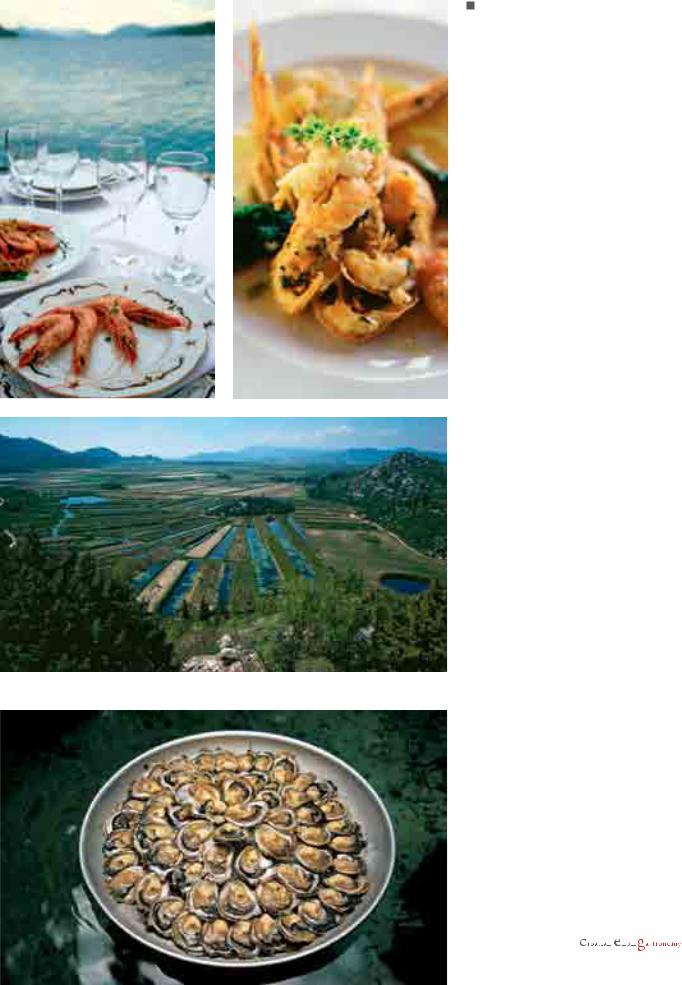
health
Dubrovnik and its surroundings have always been the area of trade and commerce and therefore it certainly has the most diverse cuisine in the region. Proximity of Otrant Gate and the deep quiet Dubrovnik port, throughout history, meant a break and rest for sailors, but also provisions for long journeys. Marco Polo, who was born in 1255 on Korčula, started his famous journey from there. It is thanks to the port of Dubrovnik that many plants from around the world arrived in this region with the help of sailors who have collected and brought them from their voyages. A special feature of that area is also the delta of the Neretva river. The Neretva river and the sea fed the population for centuries and brought good luck to sailors who during their long voyages could not go without food or fall sick.
Many visitors today, from all over the world, come here to acquire and take away with them their piece of good luck, just like a thousand years ago.
All known natural elements are dissolved in this water so that eating oysters ensures we are supplied with those elements we need only in small traces. Fish salted with sea salt (slani črnci) provides replacement of electrolytes lost due to the high temperatures. Oysters are characterized by a high mineral content and are aboundant in low molecular weight protein chains. This enable very fast energy transfer. Kotonjata is a dessert rich in pectin and beta-carotene, which usually the modern diet lacks. Eel is rich in omega 3 fatty acids.
groceries
Oysters Eel
Salt has plenty of micronutrients
Dubrovnik’s cheese Konavle kaštradina
dishes
Kotonjata
Mantala
Salted Crnci Beef with sage
Raw oysters with lemon
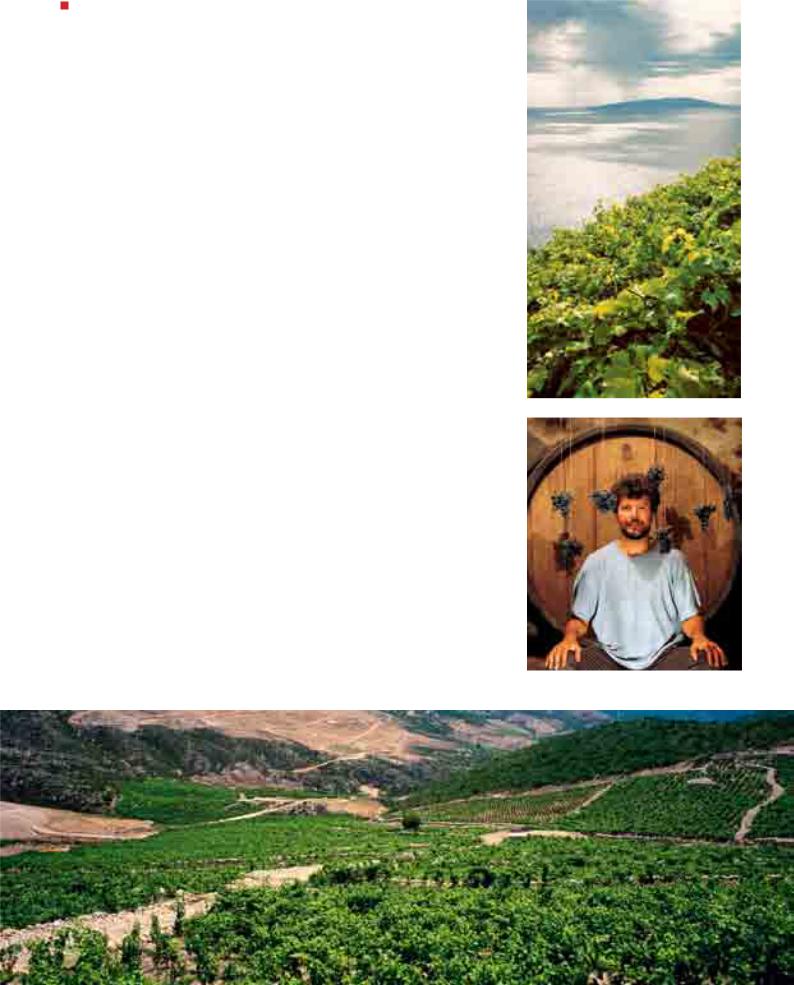
wi n e s
The Dubrovnik area belongs to the winegrowing sub-region of Central and Southern Dalmatia and it includes the coastal area from Ploče to the far south, the valley of the Neretva, the Pelješac peninsula and the islands of Lastovo, Korčula, Mljet and Elaphiti. This warmest and sunniest Croatian territory is almost entirely suitable for growing grapes, so the tradition of cultivating them ties with the beginings of this culture’s arrival on the Adriatic coast.
The rich history of the Dubrovnik Republic and its excellent links with the world have largely influenced the development of viticulture. The new varieties of grapes and new technology were brought in so through history this region was one of the most developed regions in Croatia. Even now, we find a lot of vineyards around here, and many residents are directly or indirectly related to wine production. The region is known for its famous vineyards, many of the best Croatian red wines come precisely from here. For example, the first Croatian wine with protected geographical origin is the famous Dingač harvested in 1961, named after the area Dingač on Pelješac, and the first white, also in the category of fine wine, was Pošip from 1967 from the island of Korčula. In recent years, there has been a major qualitative shift in wine production, new producers emerging with a modern approach and modern equipment. For example, Pelješac wines not only attract the attention of consumers, but nowdays, there are more and more producers whose roots are not connected with the peninsula. Abandoned vineyards are being recovered; new areas are being turned into vineyards, the famous indigenous varieties are being revitalized, so, this area is certainly expected to produce even better wines. Since the main industry of the region is tourism, many manufacturers see this as an additional opportunity, so
that wine tourism is developing intensively. To taste great Plavac Mali, Pošip or Malvasia from Dubrovnik in their native space and beautiful surroundings, is certainly much more enjoyable.
The natural conditions of production
This tourist region comprises six vineyards, but each of them has a Mediterranean climate with hot and dry summers and mild, rainy winters. The average annual temperature is around 16 °C and rainfall is 8001000 mm. The geology is typically karst and varied soil – many types are found, but brown soil and red soil dominate the region. There are many places on the karst with an abundance of stone, and this land over recent years is successfully being converted into vineyards by using modern mechanization.
Most of the vineyards are located on the Pelješac peninsula, where there are many well-known locations facing the sea – eg. Dingač, Postup, Viganj, etc., which receive additional reflection from the sea’s surface and thus have very favourable conditions for the accumulation of sugar in the grapes. On the islands and in the Konvale vinyards the situation is similar – the vineyards are returning to such locations. White grape varieties are planted in most fields, due to lower temperatures and higher humidity favourable to the characteristics of their wines. In the coastal areas larger surfaces suitable for vineyards are located in the valley of the Neretva river and Konavle area.
Varieties and their wines and the most important manufacturers
The abundance and dominance of indigenous varieties is a characteristic of the Dubrovnik region too; Mali Plavac and Pošip
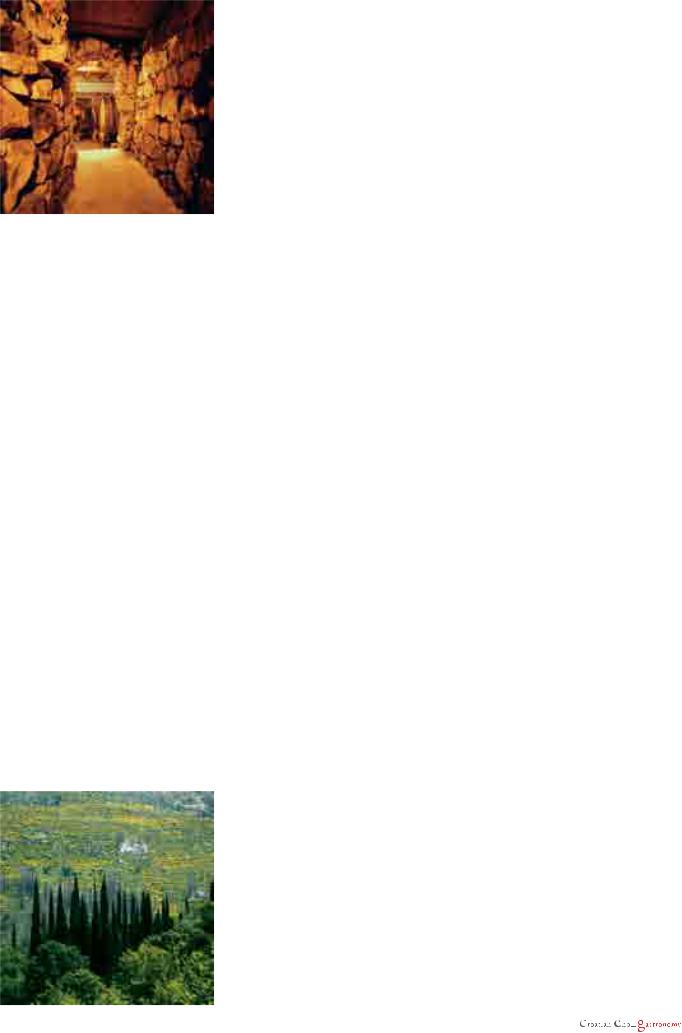
are represented here in most vineyards. In recent years, other, mainly world-famous varieties, are being planted here, but they still cannot threaten the dominance of this duo. Production of Plavac Mali here, compared to central Dalmatia, is grown in the Dubrovnik region to an even greater extent, so that famous vineyards on Pelješac are almost of one variety. On these, elevated and southfacing terrains facing the sea, Plavac Mali gives the best potential quality and therefore, the best variety and quality wines come from the region. Extremely full-bodied and dense, strong and aromatic, intensely coloured red wine has become the hallmark of many local wineries, so that this sort has no real competition. Kaštela’s Crljenak is a variety that was grown here even in the 16th century, then it virtually disappeared from Croatian vineyards, and after discovering that this variety is identical to American Zinfandel, which has solved the mystery of its origin, the interest in its planting has increased again. Nowadays large vineyards of this variety can be found on Pelješac and in Konavle, and the first wines have already arrived on the market.
According to the first assessment of this wine, we can say that the variety has met expectations and that in addition to Plavac Mali its offspring Crljenak will be of great
62
quality too. Merlot and Cabernet Sauvignon have been present along the coast for a long time and over the last few years they are being planted and on the islands too. Their quality is unquestionable, here too their wines are of high quality, but nevertheless it is difficult to compete with production of Plavac in the often extreme and difficult terrain. Over the last years Syrah (Shiraz) was introduced, being mostly mixed with other varieties, but it also justified high expectations. Of the other red wines, we should mention Plavina, which is often Plavac’s companion, and it ferments together. Vranac is a leading variety in neighboring Montenegro, but has also been cultivated here for a long time. In a few cases varietal wines are produced, they usually get mixed with other red varieties of the region, primarily Plavac Mali.
For the last twenty years, Pošip has been the area’s leading white variety, which is primarily due to its exceptional quality and adaptability. Its provenance was proved through DNA analysis; it originated from the island of Korčula, where it is being produced to this day. It is of an excellent quality and according to many, Pošip is of the highest quality of all Southern whites, because in addition to the fullness and high alcohol percentage, it is well-balanced with a nice aroma. Maraština, or more often locally called Rukatac is a variety which is represented in the area to a greater extent, compared with other parts of Dalmatia. There are several wine varieties whose quality varies, as it is quite challenging to cultivate them in those locations. It makes excellent sherries and is sometimes cultivated for the production of dessert wines. Grk variety is one of the natives of the area, whose origin intrigues (namely, one of the assumptions is that is of Greek origin, hence the name, or that it came to the island since the time of the Greek colonization of the Adriatic, 2-4 century B.C). Grk has a great quality – it undoubtedly has huge potential, but it is grown in a very limited space. It gives exceptional, real southern wines, strong and full, yet balanced, of specific aroma and flavour. Of the other white varieties, we should mention Cetinka, which is a widespread variety, but may provide unusually fresh and light wines for the region, and is much sought after, and Trbljan, a high quantity variety that often occurs in domestic and cheap wine.
In the Dubrovnik area, there is one more unique variety, Malvasia Dubrovnik – known and appreciated for centuries. It provides the highest category of white wines, full and strong, very aromatic, and has exceptional potential for the production of fortified sweet wine – these are wines that regularly receive the highest ratings. The importance of Malvasia in Dubrovnik lies in the fact that this variety of wine had a special treatment – in the Republic of Dubrovnik
the price of other wines was limited while the prices for Malvasia were freely formed. DNA-analysis showed later on that the same variety was found in Sicily (Malvasia delle Lipari) and some other places in the Mediterranean. This type is rare, but highly valued everywhere, and today it is fully revitalized in Konavle and there are a few notable wines on the market.
In recent years a large number of small producers prospered here more than anywhere else in Croatia. The credit for this goes primarily to Plavac Mali, so that those who produce this wine are the most numerous.
There are almost no producers on Pelješac today who do not offer Plavac, and this wine in recent years has led to the unprecedented expansion of vineyards in certain locations. Vineyards are being planted, new ground conquered, modern technology introduced in the wine cellars, so we can say that today’s best Croatian wines come from the Pelješac peninsula. Among the first to produce superior Plavac, even during the socialist period, were agricultural cooperatives Dingač and Postup Donja Banda which produce them even today, but they have very strong competition. On the market today Niko Bura and Mara Mrgudić offer excellent Plavac Mali wine (some already legendary vintage wines and highly valued too), Grgić Wines Ltd. (the famous Croatian winemaker from California Miljenko Mike Grgich produces highly valued Plavac Mali and Pošip at his winery in Trstenik), Miloš Skaramuca and Matuško are among the first private producers, they had a few notable harvests, and to that group also belong Miličić, Radović, Kiridžija and Poljanić. There are a few more of them who have produced excellent Plavac, we should mention the new – primarily Saints Hills winery with excellent Dingač, Korta Katarina with very well-received Plavac and Pošip, and Terra Rota with Plavac from new locations, with karst reclamation. But the Peninsula is getting conquered by other varieties too, and so we should mention the winery Mokalo, owned by US-Croatian owners (MrgudićBenmosche), which produces Zinfandel, from the beautiful vineyards in Viganj.
The most famous and the largest manufacturers of Pošip are on Korčula, and those are agricultural cooperatives Čara and Smokvica, which began with the production of these varieties in the fifties of the last century. They offer some very popular and sought after wines (Pošip Čara, Marco Polo, Centurion) at reasonable prices. One of the wineries that should also be mentioned is a small winery Toreta in Smokvica, which besides offering Pošip also offers Rukatac and other wines, and Krajančić and Kunjasa, local winemakers, who recently appeared on the market. On
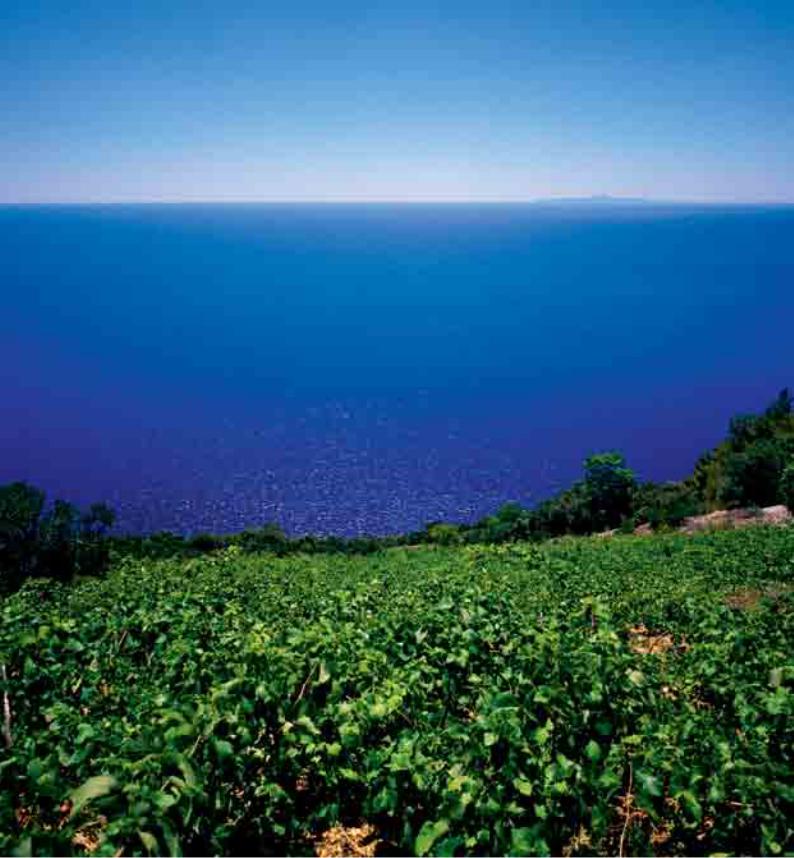
Korčula, Pošip is being also produced by the winery Blato 1902, which offers Pošip, Plavac Mali and table wines (made of one or more sorts of grapes). Among the other varieties the most important is Grk, which has a very high reputation, is very specific and difficult to grow, and its wines are quite sought after. It is produced in a very limited number of locations, mostly in Lumbarda on the island of Korčula, the only place where varietal wines can be found. There are several small local produc-
ers, including Branko Cebalo, the Fidulić family, Frano Milina Bire, Bartul Batistić Zure, etc. Most of them offer Plavac Mali (which is needed for pollination purposes in the Grk’s vineyards), while the quantity of other wine varieties is small – notably Korkyra, a mixture of native white varieties with the largest share of Cetinka, light and fresh, a very reasonably priced wine.
Dubrovnik’s Cellars Winery Inc. is the largest producer of wine in the Konavle district, which offers a notable wine Merlot
and Cabernet Sauvignon (under the names
Merlotina and Trajectum) as well as Plavac Mali. But, the most interesting in that area is Dubrovnik’s Malvasia, successfully revitalized a few years ago, and today several excellent wineries offer this wine – these are primarily the Karaman family (which won the sherry champion title at the international competition “The World of Malvasia 2009”) and Andro Crvik, Miho Bratoš, Cellar Marinović, who apart from Malvasia offer other wines too.
7_dalmatia_dubrovnik |
63 |
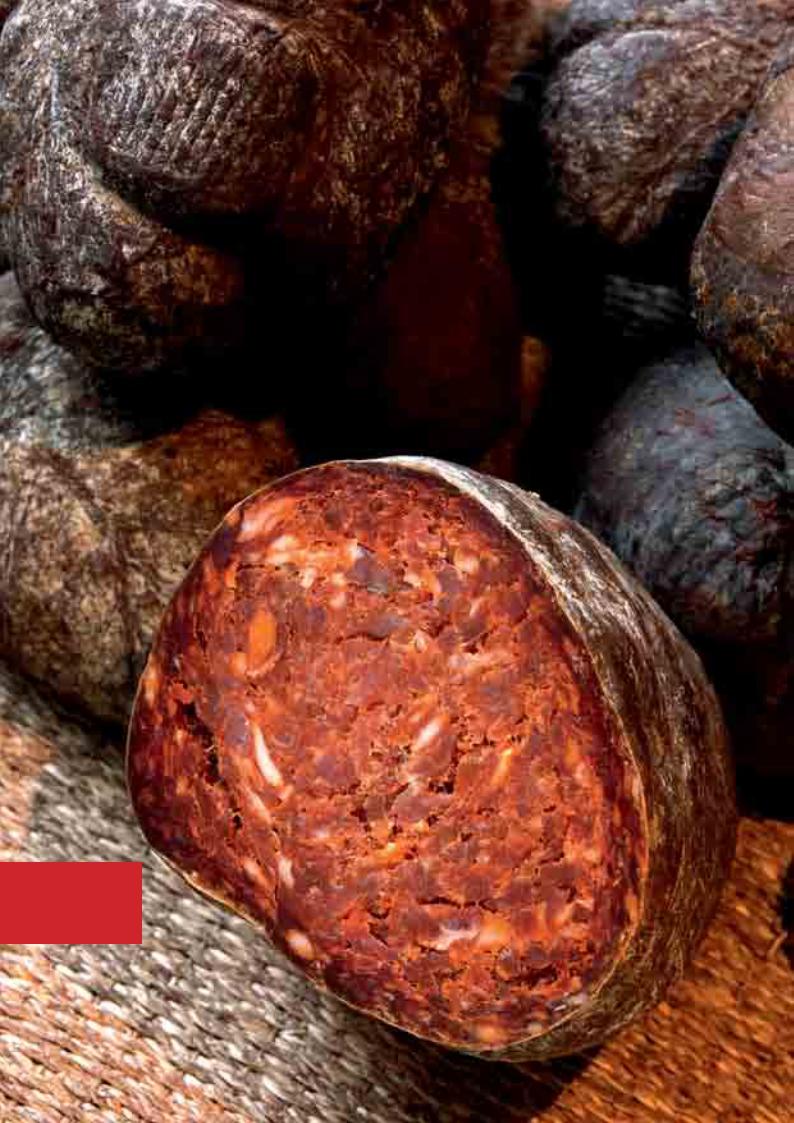
8s l a vo n i a
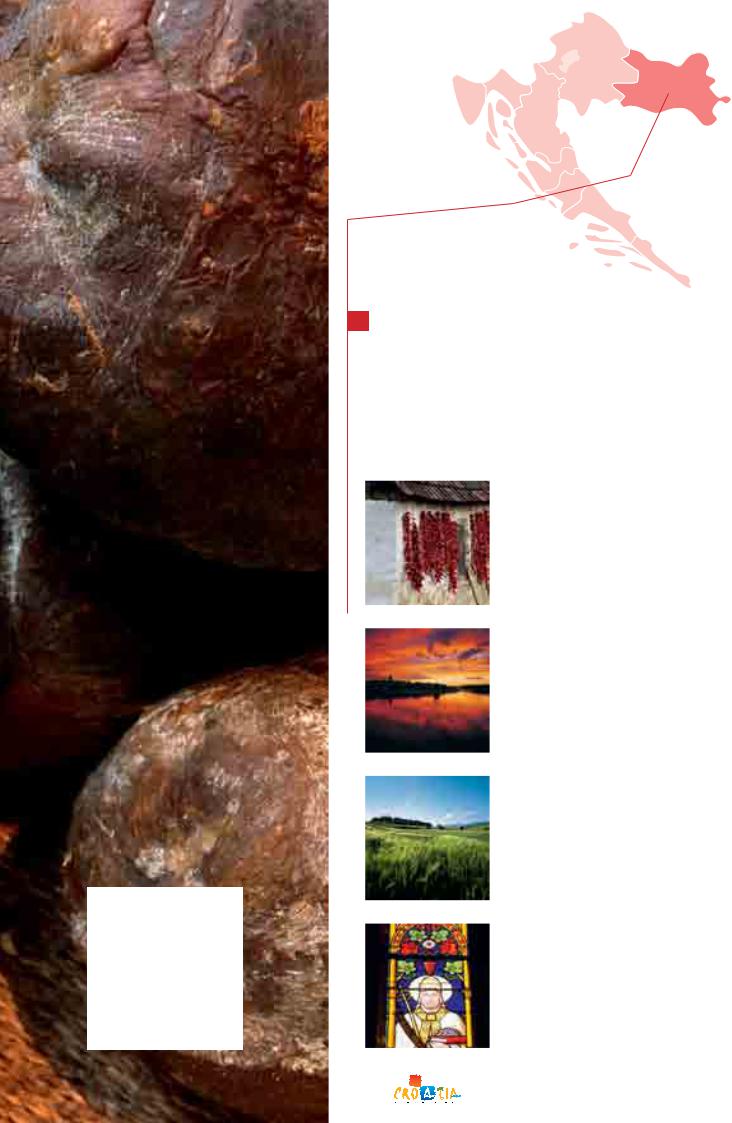
Slavonian gastronomy is characterised by excellent smoked meat products, specialties of freshwater fish and sumptuous desserts
Did you know?
Slavonian Kulin was the first Croatian food brand with protected origin, and it has since also
become part of the world’s gastronomic heritage.
8 Gastro culture is an important part of the general culture of the Slavonian region while its outstanding hospitality is one of the important features of Slavonian tradition and ancient customs. Communication channels and human rela-
tionships are associated with food preparation and the way it is served, while an abundance of food is considered to be the trademark of every Slavonian house.
The Slavonian plain is the largest fertile area in Croatia and that fertility is the source of an enduring wealth of varied and imaginative Slavonian cuisine. The plain is intersected by the rivers Sava, Drava and Danube, which enrich Slavonian tables with freshwater fish and many specialties including carp, perch, catfish and other fish. But Slavonia is not merely the plain, as is often thought, but also has a mountainous landscape in the western part, where some of the most important wine-growing areas in Croatia are found.
Gastro culture is an important part of the general culture of this region and outstanding hospitality is one of the important features of the Slavonian tradition and ancient customs. Communication channels and human relationships are associated with food preparation and the way it is served while an abundance of food is considered to be the trademark of every Slavonian house. This is equally true in Baranja, the easternmost part of Croatia.
Cookery is an important topic of discussion for every Slavonian and Baranja resident, but also a way of life and a source of satisfaction. You have hardly sat down before your host is offering you some local specialties, because no house has a lack of local sausages, Kulin (kulen), bacon, crackling, plum brandy ...
Local Kulin Galović became the first Croatian food brand with protected origin (followed by the protection of Istrian prosciutto, Pag’s cheese and Slavonian plum brandy and, recently, the trademark Greaves Galović.
The basic prerequisite for the continued quality of every product, including kulen, is strict quality control of the raw materi-
65
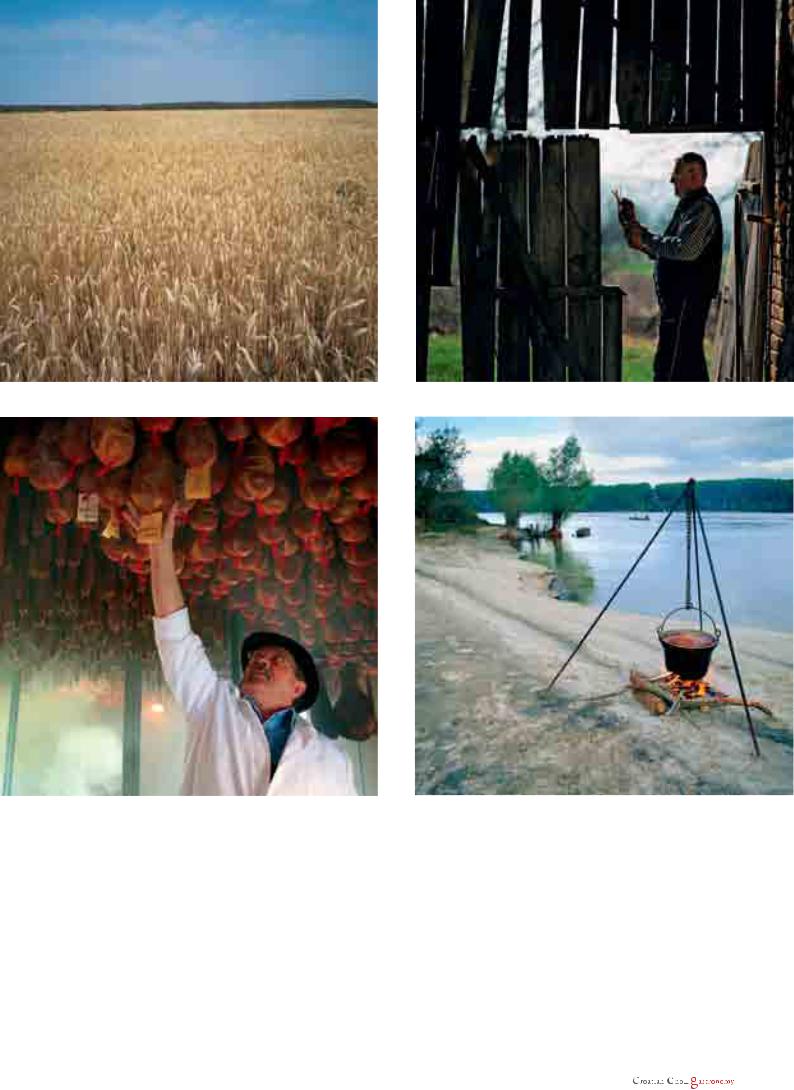
als from which the food is prepared. Pigs must be kept in the open and fed with healthy food (acorns from the Slavonian forests, corn, barley, oats and clover). The recipe for the preparation of kulin is not some special secret: it is based on the good quality of the raw materials and proper stuffing into bags made of pork intestine, for which you need a superb craftsman. Only 10% of the highest quality of meat (ham, pork, shoulder, neck with no fat) of the total weight of pigs aged between 12 and 20 months ends up in kulin: the rest is processed into other products.
After the kulin is stuffed, it goes to a smokehouse, where it stays, for short periods, exposed to light smoking for seven to ten days in smoke from burning hornbeam and beech. Next is the process of ripening, in a room where natural ventilation is
66
ensured and optimum humidity reached, which allows the kulin to get coated in noble rot. In the process of ripening, kulin loses about 50% of its original weight. The entire process, from pig slaughter to bringing kulin to market takes six months. Many households in Slavonia produce this most famous Slavonian sausage specialty, which is included in the global culinary heritage and a modern industrialised version of the sausage is produced in Belje.
Kulenova seka (literally kulen’s sister) is almost equally as valued as kulin (or kulen). It is of a similar composition as kulin and stuffed into beef intestine, which undergoes the same process of smoking and drying, but because of its thickness, it is slightly shorter. Lovers of meat products will be delighted with crackling (greaves) – bacon cut into small pieces, melted in a
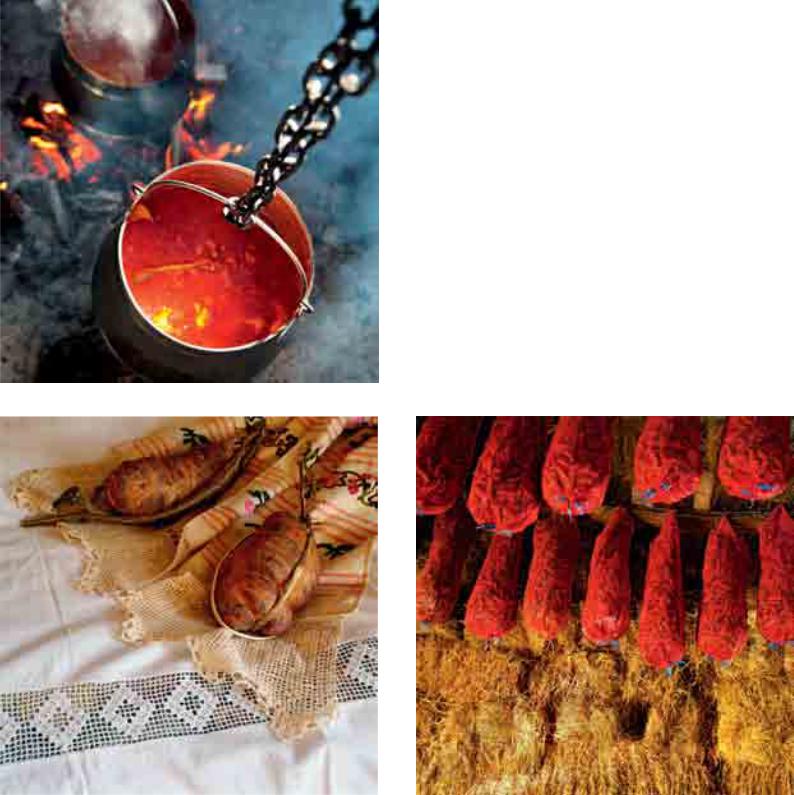
large kettle on the hearthstone and then pressed in order to separate it from excess fat.
Various types of sausages, from mild to very spicy, like švargla, smoked ham and other products complement a wide repertoire of cured meats for which Slavonia is at the forefront of the national gastronomy.
For centuries Slavonian cuisine has been exposed to various influences, from Hungarian and Austrian to eastern cuisines, but it never lost its own originality but only enriched it with new recipes and culinary experiences.
Fiš-paprikaš (hot paprika based fish soup) or fish stew/soup is one of the favourite dishes of Slavonia, and chefs say that – in addition to using fresh fish – the secret of its preparation is in the high quality of paprika powder, whose piquancy is deter-
mined by customer preferences, and fish stew can be served with a mild variant or an extremely spicy one.
Freshwater fish are prepared on the grill, but also in a very special Slavonian way – baked on a long fork over an open fire on coals. In more recent times, in the prestige restaurants they serve fish greaves, as an appetiser – a pâté made of ground crackling, with added cucumbers, sweet red pepper, mustard, onions and pressed garlic.
Catfish, a freshwater fish, are usually prepared as perkelt or in a stew: add the cleaned pieces of catfish to braised onions, add
Jolly, songful and hospitable Slavonian bećari and snaše (local man and woman) will turn each guest’s visit
to Slavonia into an unforgettable hedonistic trip.
peppers, tomatoes, garlic and spices, and after twenty minutes of cooking, serve the perkelt with pasta.
A very popular dish as well is čobanac – a legendary shepherd’s stew – the finest when prepared in a pot on the fire. The pot’s bottom is lined with chopped onions mixed with fresh peppers and then the meat – sheep, lamb, beef or veal – is added to it cut into cubes. Add water and wine, plus tomatoes, cook until the meat is tender, then add a little bit of cream and some more wine depending on the specific taste and finally add dumplings.
Slavonian cuisine is unthinkable without sweets. The typical cakes such as salenjaci – a dough with added minced bacon, folded several times and stuffed with nuts or jam, baked in the oven or gužvara – a dough filled with walnuts or poppy seeds,
8_slavonia |
67 |

baked in the oven, are just a few of the ancient recipes for making sweet delicacies. Walnut cake, poppy cake, various kinds of festive and cream cakes, gingerbread, bear paws (biscuits shaped like bear paws), vanilla cookies and peach cookies are just part of the Slavonian dessert menu, especially sumptuous when prepared for and served at special occasions / celebrations such as births, christenings, engagements, weddings, harvest work, pig slaughter ...
Slavonian oak forests are the ideal environment for forest fruits. Most picked are various kinds of mushrooms, which are most common on the menu in their harvest season.
Just as the home of Malvasia is Istria, so Slavonia became homeland to Graševina (Riesling, although this is one of the domesticated varieties). From the wine-growing areas around Kutjevo and Ilok, but also from the vineyards of Belje, come some of the best Croatian continental wines, Riesling and Chardonnay and in recent times also red wines of a very high quality: merlot, pinot noir, etc. Kutjevo’s and Ilok’s cellars with a long tradition of wine production are the oldest ones in Croatia. The best Slavonian wine producers have opened their cellars to visitors, so the wine tasting rooms are an important part of tourism in the Slavonian wine routes.
Agritourism in Slavonia, as in many other Croatian regions, is rapidly developing and the advantage of this type of tourism is an abundance of gourmets attracting visitors who appreciate the autonomous kitchen.
By temperament, Slavonians are jolly fellows and their joyful mood is accompanied often with the inevitable tamburaška music (Croatian tamburitza /tam•bu•rit•za/ is a folk song played with a tambura – cousin of the Russian balalaika and the Italian mandolin) that accompanies each party. The mood is further enhanced with fine and imaginative cuisine and wines. The well-known Slavonian bećari and snaše (local men and women) hospitality will turn each visit to this region into a hedonistic unforgettable trip.
From the many popular restaurants that offer authentic Slavonian cuisine, one should definitely visit the Baranjska Kuća in Karanac, Kovač Čarda in Suza, Restaurant Zdjelarević in Brodski Stupnik and the restaurant at the Hotel Osijek in Osijek.
And after enjoying Slavonian cuisine, not only for the purpose of spending excess calories, it is recommended to visit the famous Kopački rit, a unique natural phenomenon in the world, where it will also be possible to try some of fine Slavonian dishes.
68
health
The area of exceptional gastronomic luxury comes from optimum climate conditions that suit the plant world.The number of crops which cannot grow here is almost negligible.
Rivers, swamps and forests teem with wildlife and Slavonia prides itself on its excellent venison.
Game and venison dishes are deeply rooted in the diet of the region. The meat of wild fowl, deer, boar, rabbit was always used here for food. The meat of wild animals is rich in minerals, especially iron (Fe), which is one of the reasons for a lower occurrence of anemia in the population that consumes these high-quality foods. In Slavonia full meals normally consist of a sequence of several dishes, and the portions are much larger than in other regions. Spices are favourite ingredients of any meal and are intenseso the red paprika that gives colour and flavour to stews and fish paprikas as well as to the unique kulen – mark the regional cuisine.
groceries
Pheasant Carp
Oyster mushrooms Venison Freshwater fish rolls
dishes
Pheasant soup Venison steak Fish
Carp Pheasant pâté
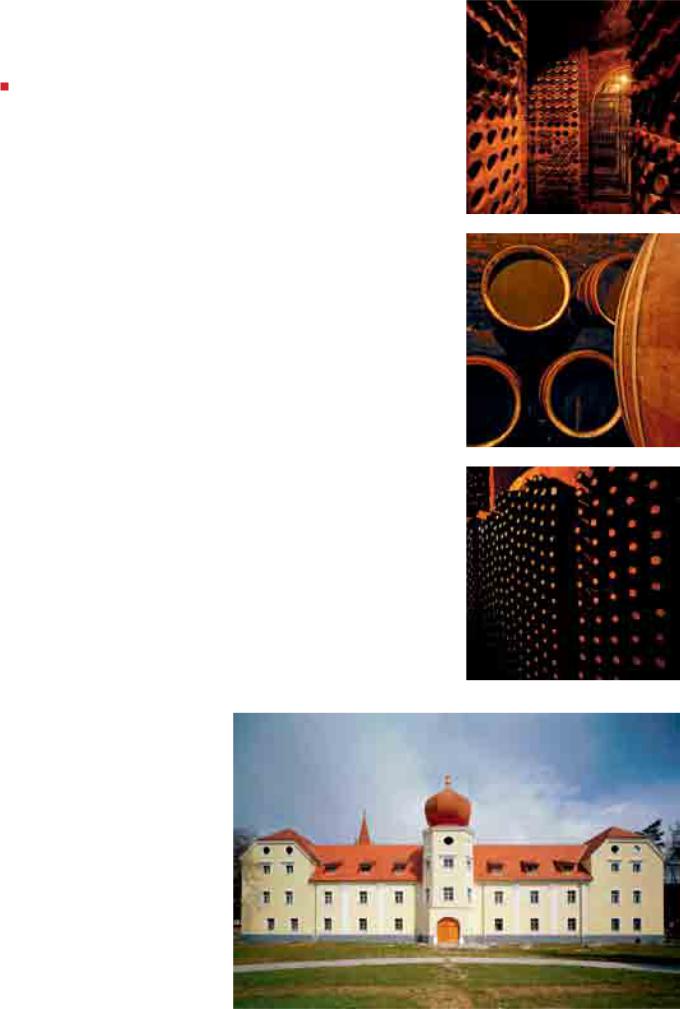
wi n e s
This is the largest tourist region, as well as wine-growing area – the largest area of vineyards with the largest production and export of wine. Slavonia is a leader in many fields, but, it should be stressed that the best white wines of the Croatian mainland come from here. The region stretches from Virovitica and Daruvar in the west to the Danube, encompassing the eastern Croatian borders, including the finest and most diverse locations, where grapes are traditionally grown and many residents depend on it. According to vineyard legislation this region comprises of two sub-regions (Slavonia and Danube); thirteen vineyards in total and here the largest wine producers are located. In addition to the few large, most of the smaller manufacturers originate from family farms, but compared to other Croatian regions, Slavonia records the largest vineyards by manufacturer. Modern technology is applied, superior varieties are planted, so the wines are of high quality – Slavonian wines regularly receive awards and recognitions at national and international competitions.
The tradition of wine growing in Slavonia goes back to the third century when the Romans planted grapes on the slopes of Fruška Gora, and then it spread throughout the region. From then until today, there are many records about the quality of wine and the importance of its production for the wider economy – the vine has become one of the most important agricultural crops in Slavonia.
Vineyards and production conditions
Slavonia occupies a very large and diverse mountainous area bounded by the rivers Drava, Sava and Danube. The majority of vineyards are situated on the gentle and spacious slopes of the mountains Dilj, Psunj, Požeška Gora Papuk, Krndija and Fruška Gora and on the hills above the rivers, where large water surfaces create a very favourable microclimate for the production of quality grapes. Between individual vineyards there are large differences in environmental conditions and going towards the east on the mountain the climatic features become typically Pannonian. But these differences are manifested in a variety of wines, and Slavonia is the Croatian leader at that too.
The main production is located around the cities Kutjevo, Đakovo, Ilok, Erdut, Daruvar and Slavonski Brod. The vineyards are located on higher ground, usually 150-350 m above sea level and at the far east, near the Danube, the grapes are even planted un-
der 100 meters. The climate is continental, moving from west to east temperatures rise and rainfall decreases. Thus, in the west region the average annual temperature is 10.5 °C and rainfall is about 900 mm, while in the Danube region temperatures are around 11 °C and rainfall is 650-700 mm. But because of a favourable annual distribution drought is rare. The soil is very diverse, from the Danube’s and Podravina’s type of sandy to brown calcareous soil and red soil, but they are all suitable for growing grapes.
Generally speaking, Slavonia is also in terms of natural conditions well suited for producing quality wines. As in other continental vineyards here too white wine predominates while more heat and sunshine and less rainfall in the region of Slavonia is reflected in their characteristics – they are usually full, medium to high calorie wines, with a very nice fruity aroma. In recent years, especially from the Danube locations we get the great red wines. This is a result of technological changes, planting of better varieties and according to some, global climate changes as well. But, without going into the reasons behind this, the fact is that this area offers a lot of excellent wines in all categories and justifiably deserves the title of best Croatian region.
Varieties and their wines, and the most important manufacturers
Riesling, the variety known in neighbouring countries under the names Riesling Italico, Welschriesling or Laški Riesling is not a Croatian variety, but it certainly achieves the best quality here. It is the most important and most widespread variety in Croatia
8_slavonia |
69 |
